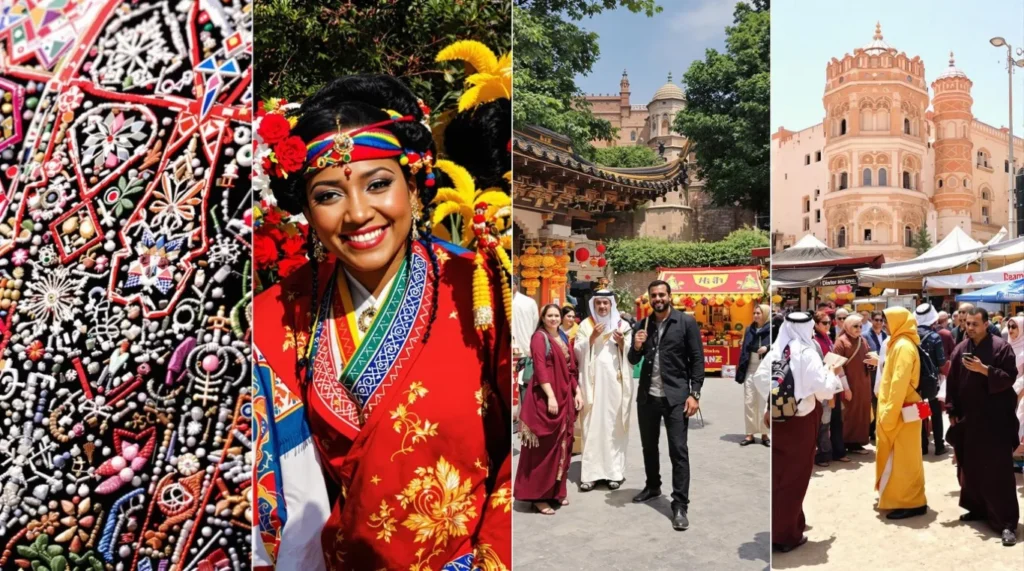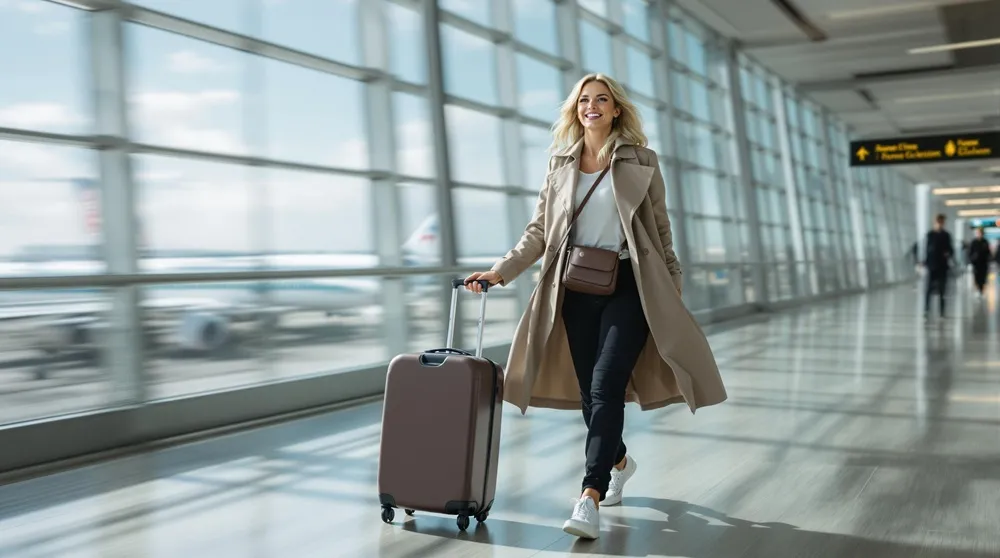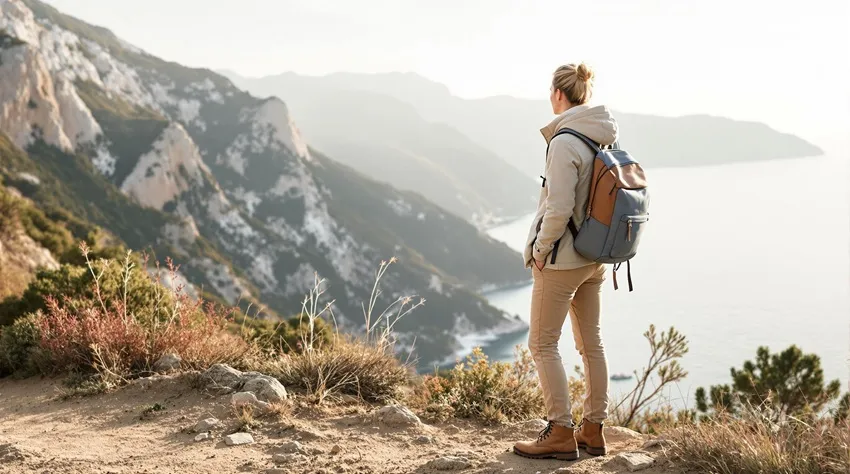Ever packed your favorite tank top for a sunny destination, only to find yourself needing to cover up unexpectedly before entering a stunning temple? It’s a common travel hiccup! Moments like these highlight why understanding local customs is so important for truly connecting with the places we visit. Being culturally sensitive means showing respect, and believe it or not, dress codes around the world play a huge role in that – think of your outfit as your first, silent greeting!
This guide is your friendly companion to navigating these often unwritten rules. We want to help you feel confident and respectful, avoiding awkwardness and embracing immersive experiences. We’ll explore how to research effectively, look at specific examples from different regions, and tackle tricky situations like religious sites or formal events. Let’s dive in!
(Psst… looking for the perfect blend of style and comfort for your travels? Don’t forget to check out our main guide: Your Complete Guide to Comfortable & Chic Outfits on the Go.
Why Bother? The Real Impact of Your Outfit Choices Abroad
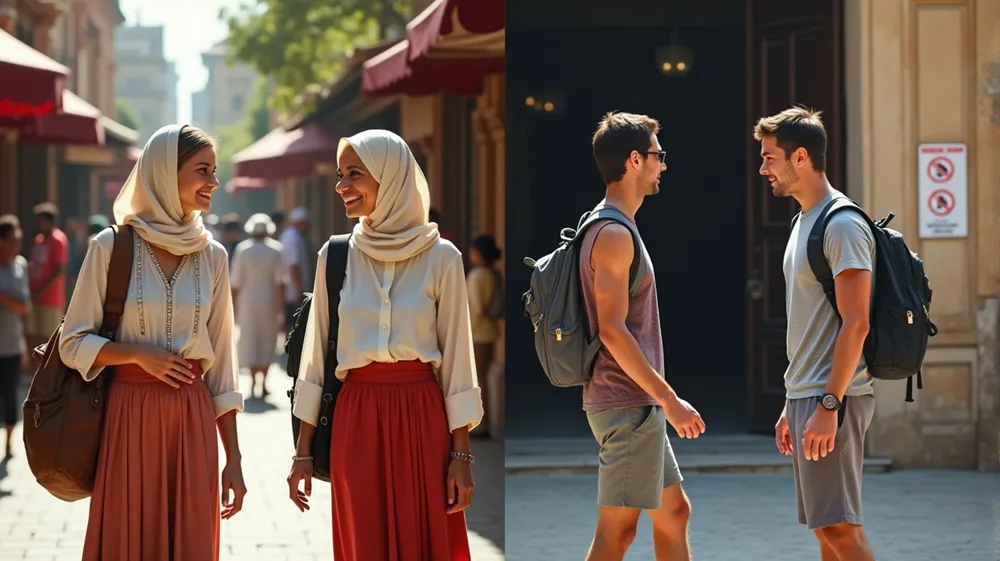
So, you’ve packed your bags, excitement is bubbling, but does what you wear really make a difference? Absolutely! Think of being mindful about dress codes around the world as building a bridge of respect wherever you go.
Here’s why it truly matters:
- Creating Comfortable Vibes for Everyone: When you dress in line with local expectations, it shows you value the culture. This simple act helps locals feel respected, often making them more welcoming. Bonus: You’ll likely feel more comfortable too!
- Avoiding Accidental Offense: Let’s face it, nobody wants to be disrespectful! What’s perfectly normal beachwear at home might be inappropriate for a bustling city market or sacred site elsewhere. Understanding local norms prevents unintentionally stepping on cultural or religious toes.
- Unlocking Richer Experiences: Showing respect often opens doors. Locals may be more inclined to chat, offer help, or share insights when they see your effort. It can lead to more genuine interactions and a deeper connection.
- Sidestepping Awkwardness (or Worse!): Ignoring dress codes can lead to more than just funny looks. You might face social awkwardness or be denied entry to temples, museums, or restaurants. In stricter places, there could even be fines. A little awareness goes a long way!
The Traveler’s Toolkit: How to Decode Dress Codes Before You Go

Alright, ready to become a dress code detective? Packing the right clothes isn’t just about weather forecasts; it’s about cultural awareness too! Doing a little homework before you zip up your suitcase is key to packing smart and traveling respectfully. Think of this as your personal toolkit for understanding local clothing norms for dress codes around the world:
Your Pre-Trip Research Arsenal:
Get started before you even think about folding that first shirt!
- Guidebooks & Trusted Travel Websites: These are fantastic starting points. They often provide general overviews of cultural etiquette, including dress expectations for tourists.
- Official Tourism & Cultural Resources: Don’t overlook the destination’s official tourism board website! They frequently include sections on customs and traditions, offering reliable advice.
- Online Forums & Expat Groups: This is where you get the real-time scoop! Dive into platforms like Reddit (search for specific country or travel subreddits), TripAdvisor forums, or Facebook groups for expats living in your destination. You can ask specific questions like, “What should I wear for a casual dinner out in X city?” and get practical answers.
- Watch & Read: Travel documentaries, memoirs, or even current news articles can offer invaluable visual context and a deeper feel for the local atmosphere and how people present themselves.
Remember: Context is Everything!
Dress codes aren’t monolithic. What’s acceptable often depends heavily on the situation:
- Location Matters: What flies in a bustling, modern capital city might be out of place in a conservative rural village or a quiet coastal town. Always consider the specific locale.
- Occasion is Key: Dressing for a casual stroll through a market is different from attending a religious service (church, mosque, temple, synagogue), a formal event, or even a business meeting.
- Time of Year: Beyond just weather, certain seasons might involve specific festivals or holidays with unique attire expectations.
On-the-Ground Intel:
- Observe Like a Local: Once you arrive, pay attention! Notice how local people dress for different activities – heading to work, shopping, dining out. This is often your best real-world guide.
- When in Doubt, Politely Ask: Seriously, if you’re unsure, especially when planning to visit homes, religious sites, or official buildings, don’t hesitate to ask respectfully. Your hotel concierge, a tour guide, or even a friendly local shopkeeper can usually offer helpful guidance. A simple, “Excuse me, is this outfit appropriate for visiting the main temple today?” goes a long way.
Navigating Dress Codes in Different Regions: A Traveler’s Guide
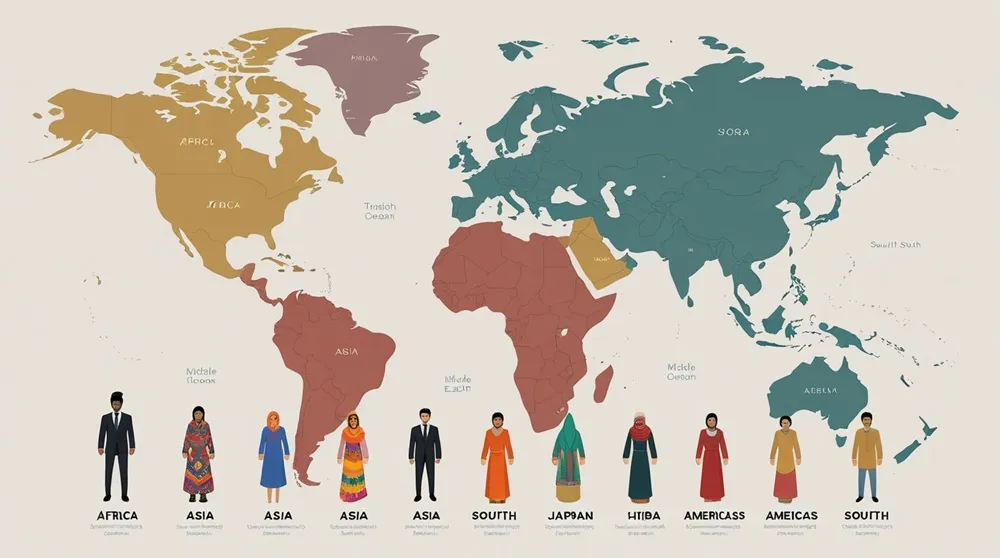
Alright, let’s zoom in a bit! While every country (and even regions within countries!) has its own unique flavor, here are some general pointers to keep in mind about dress codes around the world. Think of this as a helpful starting point, but remember, your pre-trip research (Section III, wink wink!) is still your most valuable tool.
Africa: A continent of stunning diversity, reflected in its dress norms!
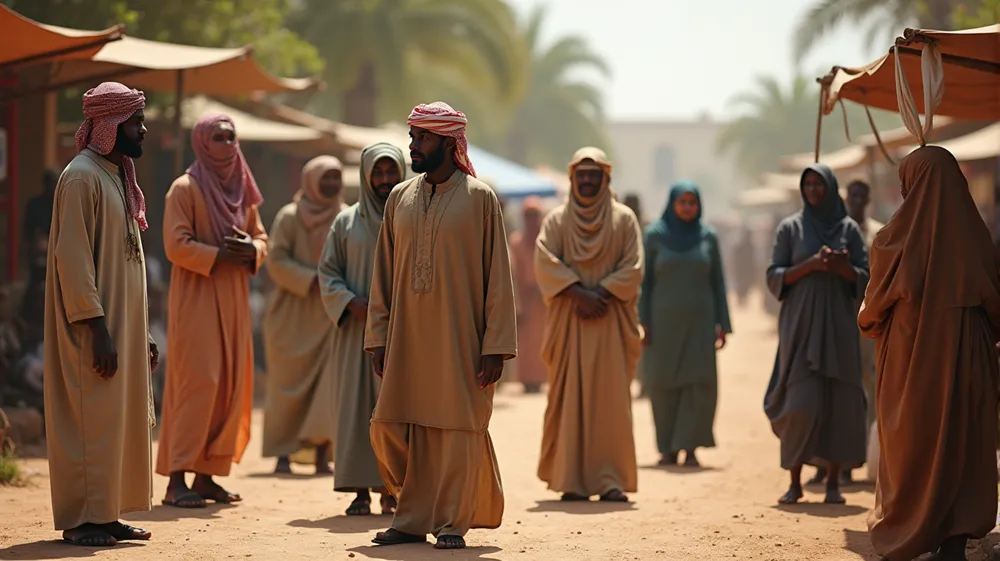
- North Africa (e.g., Sudan, Morocco, Libya, Egypt): Generally leans towards more conservative dress for both men and women, influenced by Islamic traditions and local culture. It’s usually a respectful choice for women to ensure shoulders and knees (at minimum) are covered in public. Men might also feel more comfortable in long pants, especially when venturing beyond tourist hotspots.
- Sub-Saharan Africa: Norms vary incredibly widely across this vast region! Local customs, religion, and urban vs. rural settings all play a role. It’s worth noting some countries have specific sensitivities; for instance, Uganda has official guidelines discouraging overly tight or revealing clothing like mini-skirts, primarily aimed at locals but good awareness for visitors too. Observing locals and opting for modest, comfortable attire is often the best approach.
Asia: So diverse it’s impossible to generalize easily, but here are a few snapshots:

- East Asia (e.g., North Korea): Dress codes can sometimes be influenced by political factors or strong social conformity. In North Korea, for example, reports mention restrictions on items like blue jeans for locals and expectations of modest attire for visitors. Always check current guidelines if visiting less common destinations.
- South Asia (e.g., India, Myanmar): Modesty is often highly valued. Covering shoulders and knees is a good rule of thumb, particularly when visiting religious sites (temples, mosques), government buildings, or exploring rural areas. You’ll see beautiful traditional clothing like saris in India or longyis in Myanmar – appreciate the local style!
- Southeast Asia: You’ll find a real mix here. Bustling tourist centers might feel quite relaxed, but respect for religious sites (temples, mosques) is absolutely crucial. Always be prepared with items to cover your shoulders and knees – carrying a lightweight scarf or sarong is incredibly useful for this!
Middle East:

- Conservative dress is generally the standard across much of the region, guided by cultural and religious values. Covering arms and legs is common practice, especially for women. Men typically avoid wearing shorts in public areas, sticking to long pants unless at a beach or resort.
- Saudi Arabia: Historically known for very strict dress codes requiring women (including visitors) to wear an abaya (a loose, full-length cloak) and sometimes a headscarf in public. While recent changes have introduced more flexibility for foreign tourists, it’s absolutely vital to research the most current regulations right before your trip, as expectations can still be high. Men also face dress codes regarding modesty (no shorts in many public places) and grooming. The key takeaway for the whole region? Err on the side of conservative respect.
Europe:
- For everyday sightseeing in most cities and towns, dress codes are generally quite relaxed and similar to other Western countries. However! Planning to visit those magnificent historic churches, cathedrals, synagogues, or monasteries? Expect to cover your shoulders and knees. It’s a common requirement showing respect. Keep a scarf or light cardigan handy. Also, remember that Europeans often dress up a bit more for evenings out, theatre visits, or nice dinners.
The Americas:
- Generally considered to have more relaxed dress codes compared to many other regions, especially in North America and major tourist destinations throughout Central and South America.
- However, context still matters! Beachwear is for the beach, city attire for the city. And importantly, if your travels include visiting Indigenous communities or territories, make a special effort to research and respect any specific cultural protocols or requests regarding visitor attire. Showing consideration is always appreciated.
Specific Situations and Dress Code Considerations

Beyond knowing the general regional vibe, certain activities and situations often have their own unwritten (or sometimes very written!) rules for attire. Thinking about these specific contexts shows an extra layer of cultural sensitivity when navigating dress codes around the world. Here are a few common ones to keep in mind:
Visiting Religious Sites (Temples, Mosques, Churches, Synagogues, etc.)
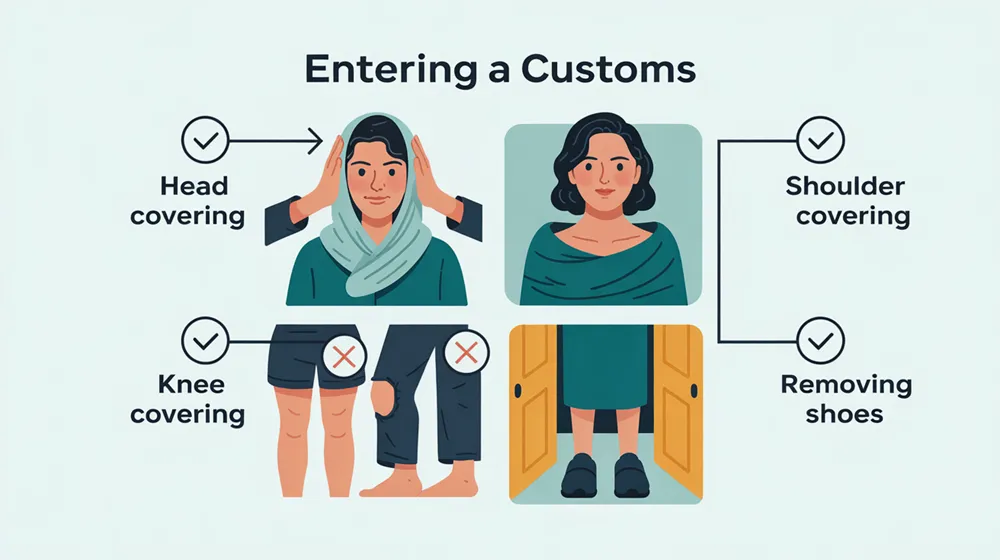
This is probably where travelers most often encounter specific dress requirements. Showing respect is key:
- Cover Up is Common: Plan on covering your shoulders and knees as a minimum standard for both men and women. Think long skirts or trousers and shirts with sleeves – these are usually safe bets.
- Head Coverings: In some faiths or specific sites (like many mosques, certain synagogues, orthodox churches, and some temples), women may be required or expected to cover their hair. Carrying a lightweight scarf is incredibly useful for this – you can whip it out when needed!
- Shoes Off Policy: Be prepared to remove your shoes before entering many places of worship and sometimes even homes. Look for shoe racks near the entrance or simply follow what others are doing. Socks are usually okay.
- Research is Crucial: Don’t assume rules are the same everywhere, even within the same religion! Always try to check the specific requirements for the site you plan to visit – check their website, ask your hotel, or look for signs at the entrance.
Attending Formal Events (Weddings, Ceremonies, Business Functions)
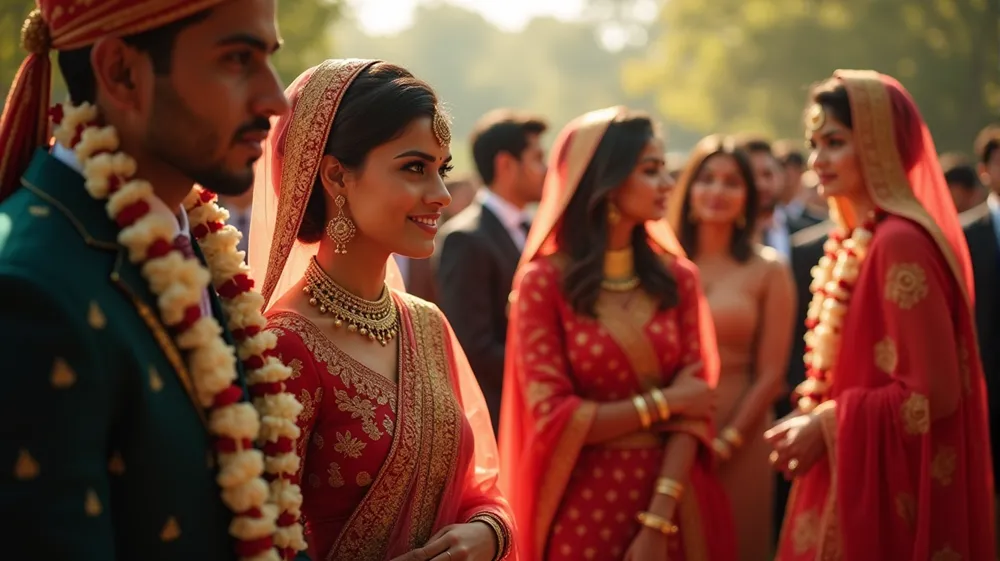
Received a special invitation? Fantastic! Just remember that “formal” doesn’t translate identically across cultures:
- Cultural Definitions Vary: What’s considered appropriate attire for a wedding, a fancy dinner, or a significant ceremony can differ hugely. Colors, styles, and level of formality might surprise you. For instance, white is associated with funerals in some cultures, not weddings!
- When in Doubt, Ask: If you know someone locally or have a host, it’s perfectly acceptable (and often appreciated!) to politely ask for guidance on what level of formality is expected.
Interacting in Local Communities (Especially Rural or More Conservative Areas)
When you step away from the major tourist hubs and into smaller towns, villages, or more conservative neighborhoods, adjusting your dress is a powerful sign of respect:
- Modesty Matters: Opting for less revealing clothing (covering shoulders, cleavage, midriffs, and knees) helps you blend in respectfully and can make locals feel more comfortable interacting with you.
- Avoid Unwanted Attention: Dressing more modestly can also help you avoid attracting unwanted attention, allowing for more authentic and relaxed experiences. Consider leaving very flashy or expensive items back at your accommodation.
Business Travel Abroad
Making the right impression is vital in international business, and your clothing plays a part:
- Know the Local Standard: Business attire norms can range from very formal suits and ties to more smart-casual approaches depending on the country, industry, and company culture. Do your homework!
- Professionalism & Respect: Dressing in line with local business expectations shows professionalism and respect for your colleagues or clients and their cultural context.
Beyond Clothing: More Ways to Show Respect Through Appearance

Hey globetrotters, remember that showing respect goes beyond just the clothes you pack! How you present yourself overall plays a big part in navigating dress codes around the world gracefully. Think of it as the supporting cast to your carefully chosen outfit.
- Watch Your Body Language: Sometimes, it’s not what you wear but how you act in it. Pointing with your finger (or worse, your foot!) can be offensive in many cultures, regardless of your attire. Similarly, certain postures might be seen as disrespectful, especially in formal or religious settings. It’s always wise to observe locals and follow their lead.
- Grooming Norms Vary: What’s considered neat and tidy can differ quite a bit. Standards for things like makeup, hairstyles, or facial hair might be more relaxed in some places and more traditional in others. A little observation goes a long way!
- Tattoos and Piercings: Love your ink? Awesome! Just be aware that visible tattoos or numerous piercings might raise eyebrows or be considered inappropriate in certain conservative regions or sacred sites. Consider covering them up in such situations to show respect.

Oops! Common Dress Code Mistakes Travelers Make
We’ve all been there – that moment you realize you might have missed the memo on local customs. It happens! But knowing common pitfalls can help you avoid awkward situations related to dress codes around the world. Here are a few common slip-ups:

- Thinking “One Size Fits All”: Assuming the casual clothing norms from back home work everywhere is a classic mistake. Cultural expectations can vary dramatically, even within the same country!
- Skipping the Homework: Not doing a quick search about your destination’s dress expectations before you pack. Just a few minutes online can save you hassle later.
- Packing Blunders: Bringing only beachwear for a city trip known for its conservative culture, or forgetting a scarf for temple visits.
- Ignoring Local Cues: Dismissing advice from hotel staff or tour guides, or not noticing how locals are dressed. They really do know best!
- Drawing Unwanted Stares: Wearing outfits that are perhaps too flashy, revealing, or simply out of place, making locals uncomfortable or drawing negative attention.
Conclusion: Dress Thoughtfully, Travel Respectfully
So, what’s the big takeaway? Understanding and respecting local dress codes around the world isn’t just about rules; it’s a powerful way to show kindness and cultural sensitivity. Choosing your outfits thoughtfully truly opens doors—it leads to warmer welcomes, richer interactions, and a deeper connection with the places you visit.
As you explore our amazing planet, approach each new destination with an open mind, a respectful attitude, and the willingness to adapt your wardrobe slightly. Embracing these small acts of consideration makes travel so much more rewarding. Happy and respectful travels!
Ready to blend style with practicality on your next trip? Check out our complete guide: [Travel Fashion: Your Complete Guide to Comfortable & Chic Outfits on the Go]
